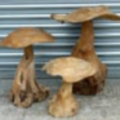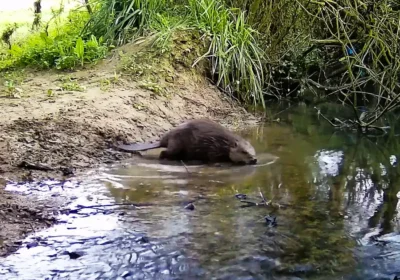The sun is sinking towards the horizon casting a pale feathery light over the open, rolling chalk lands.
Cheerful yellowhammers and chaffinch chase me down the drove where each spring I come on an annual pilgrimage to see the family of brown hares that I have come to know. Eagerly, I scan the contours of the hills to look for the distinct long black-tipped ears that protrude above the skyline.
Hares like to lie flat against the ground in a hollow scrape, making them difficult to spot, but once my eyes pick up those familiar tufty ears and reddish fur, I begin to see more and more of them. Once they see me, the field full of ‘nothingness’ suddenly has four or five hares chasing over its surface; the females punching their front paws to ward off the over-zealous males. They particularly like arable fields, befitting their old English name of ‘stag of the stubble’.
Brown hares are not the prettiest of creatures with their piercing amber eyes, but they run like the wind. Their long, rangy back legs make them Britain’s fastest land mammal, reaching speeds of 45 mph. Unlike rabbits, they live entirely above ground. It is a wonder that they exist at all given that they are very inattentive parents. Their leverets are born in a scrape in a field and have no protection as their mother goes off and returns only once a day to feed them. Yet, if they do thrive, they can live for up to 12 years. Sadly, hares have declined by more than 80% in the past 100 years due to hunting, intensive farming, the reduction of hedgerows and the use of pesticides. They are now a priority conservation species.
Being mysterious, timid, cunning and lithe, the brown hare appears in folklore and is often associated with devilry and witchcraft because, apart from in the spring, they are solitary and mostly active at night. They are credited with sinister magic powers giving harelips to unborn babies, going mad in March, ‘shape-shifting’ and being a bad omen if seen.
Satisfied that I have seen them, I make my way home under a dusky sky that is crisscrossed with pink trails. Tiny pipistrelle bats dip and scoop around my head and roe deer skulk out of the undergrowth to join the evening party. I bid them all fare ye well.
Dr Susie Curtin curtin.susanna@gmail.com.
Support Us
Thank you all so, so much for the love and appreciation you’ve shown us since we launched the New Blackmore Vale.
Please show your support and add a review on our Facebook page or on Google.







Leave a Reply